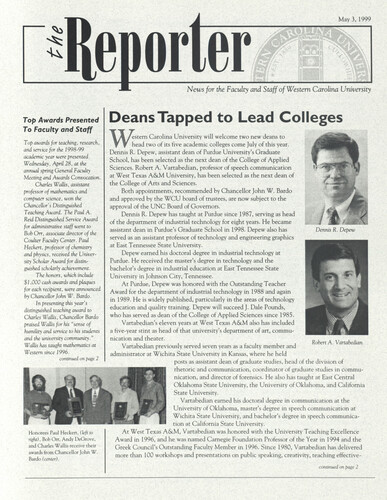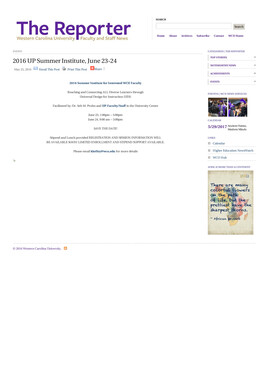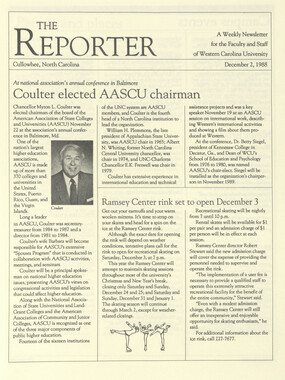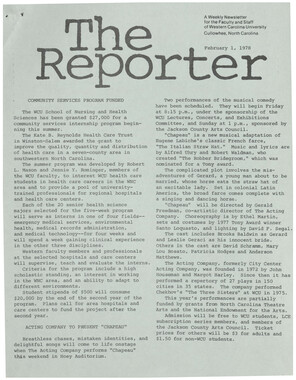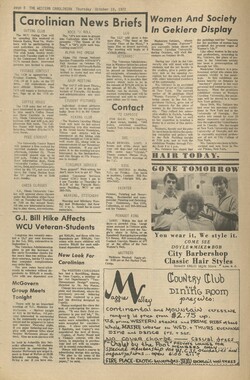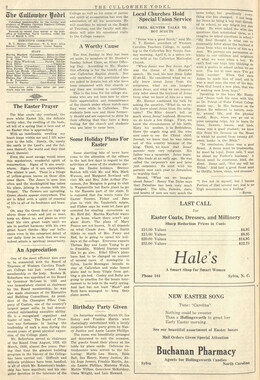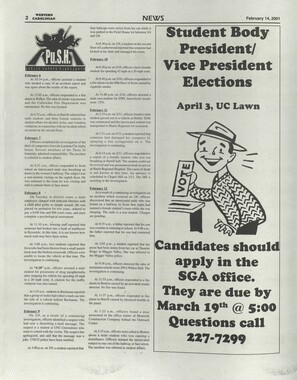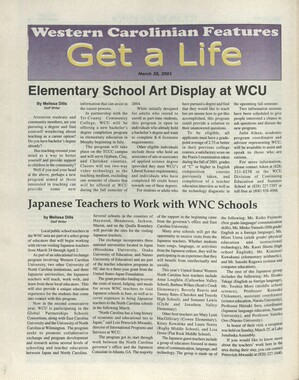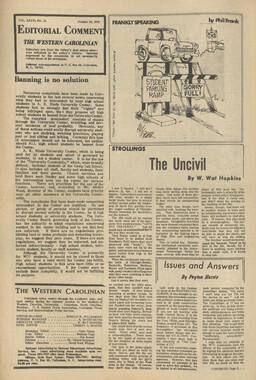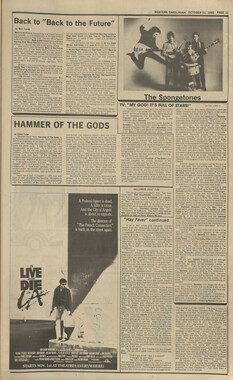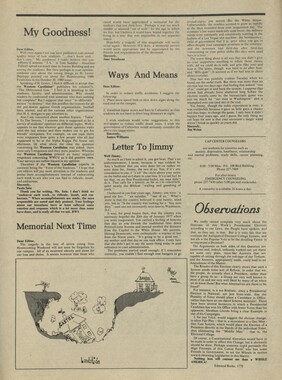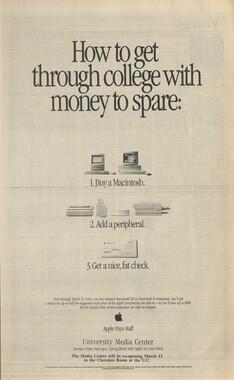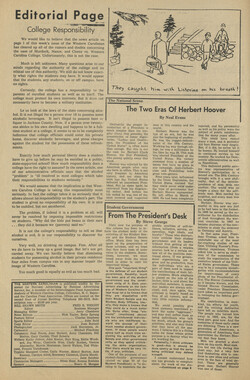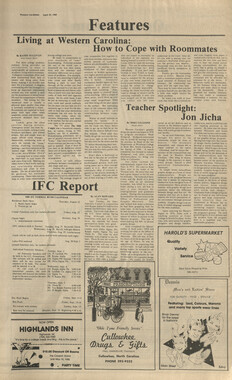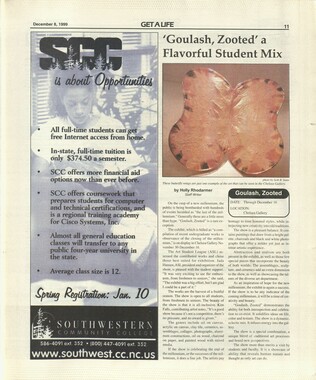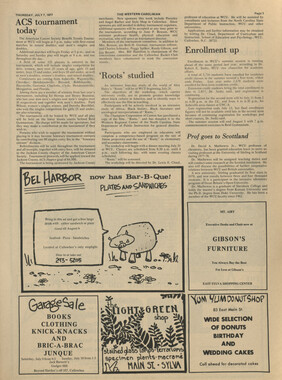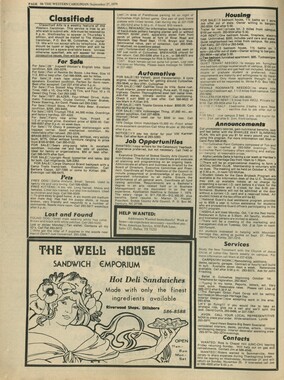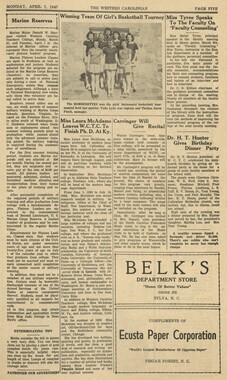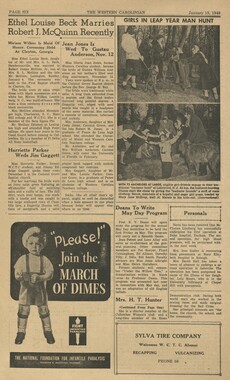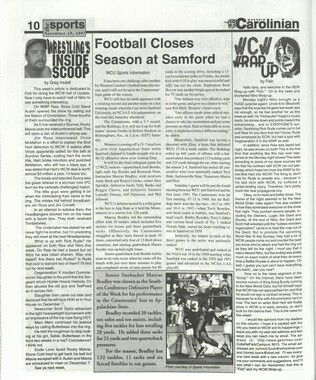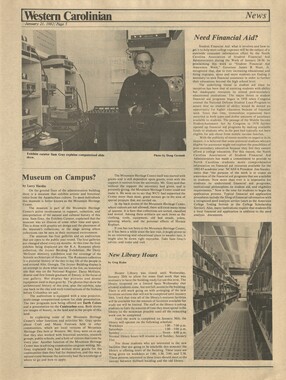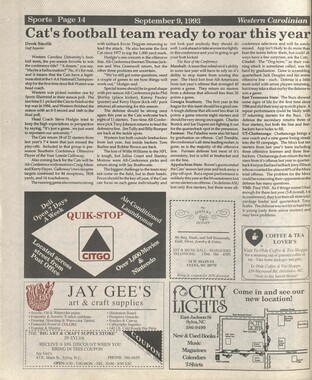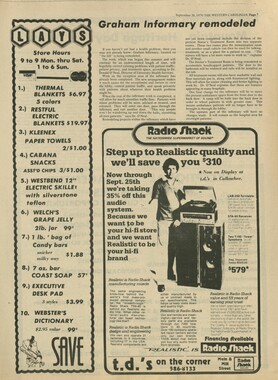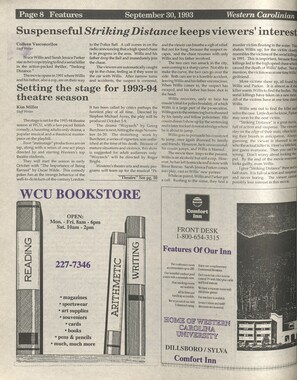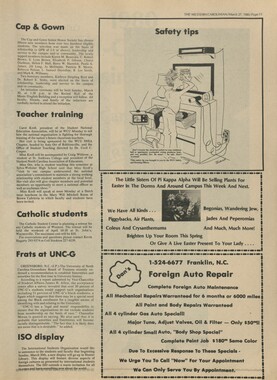Western Carolina University (20)
View all
- Canton Champion Fibre Company (2308)
- Cherokee Traditions (293)
- Civil War in Southern Appalachia (165)
- Craft Revival (1942)
- Great Smoky Mountains - A Park for America (2767)
- Highlights from Western Carolina University (430)
- Horace Kephart (941)
- Journeys Through Jackson (154)
- LGBTQIA+ Archive of Jackson County (26)
- Oral Histories of Western North Carolina (314)
- Picturing Appalachia (6772)
- Stories of Mountain Folk (413)
- Travel Western North Carolina (160)
- Western Carolina University Fine Art Museum Vitreograph Collection (129)
- Western Carolina University Herbarium (92)
- Western Carolina University: Making Memories (708)
- Western Carolina University Publications (2283)
- Western Carolina University Restricted Electronic Theses and Dissertations (146)
- Western North Carolina Regional Maps (71)
- World War II in Southern Appalachia (131)
University of North Carolina Asheville (6)
View all
- Allanstand Cottage Industries (62)
- Appalachian National Park Association (53)
- Bennett, Kelly, 1890-1974 (1388)
- Berry, Walter (76)
- Brasstown Carvers (40)
- Carver, George Washington, 1864?-1943 (26)
- Cathey, Joseph, 1803-1874 (1)
- Champion Fibre Company (233)
- Champion Paper and Fibre Company (297)
- Cherokee Indian Fair Association (16)
- Cherokee Language Program (22)
- Crowe, Amanda (40)
- Edmonston, Thomas Benton, 1842-1907 (7)
- Ensley, A. L. (Abraham Lincoln), 1865-1948 (275)
- Fromer, Irving Rhodes, 1913-1994 (70)
- George Butz (BFS 1907) (46)
- Goodrich, Frances Louisa (120)
- Grant, George Alexander, 1891-1964 (96)
- Heard, Marian Gladys (60)
- Kephart, Calvin, 1883-1969 (15)
- Kephart, Horace, 1862-1931 (313)
- Kephart, Laura, 1862-1954 (39)
- Laney, Gideon Thomas, 1889-1976 (439)
- Masa, George, 1881-1933 (61)
- McElhinney, William Julian, 1896-1953 (44)
- Niggli, Josephina, 1910-1983 (10)
- North Carolina Park Commission (105)
- Osborne, Kezia Stradley (9)
- Owens, Samuel Robert, 1918-1995 (11)
- Penland Weavers and Potters (36)
- Roberts, Vivienne (15)
- Roth, Albert, 1890-1974 (142)
- Schenck, Carl Alwin, 1868-1955 (1)
- Sherrill's Photography Studio (2565)
- Southern Highland Handicraft Guild (127)
- Southern Highlanders, Inc. (71)
- Stalcup, Jesse Bryson (46)
- Stearns, I. K. (213)
- Thompson, James Edward, 1880-1976 (226)
- United States. Indian Arts and Crafts Board (130)
- USFS (683)
- Vance, Zebulon Baird, 1830-1894 (1)
- Weaver, Zebulon, 1872-1948 (58)
- Western Carolina College (230)
- Western Carolina Teachers College (282)
- Western Carolina University (1794)
- Western Carolina University. Mountain Heritage Center (18)
- Whitman, Walt, 1819-1892 (10)
- Wilburn, Hiram Coleman, 1880-1967 (73)
- Williams, Isadora (3)
- Cain, Doreyl Ammons (0)
- Crittenden, Lorraine (0)
- Rhodes, Judy (0)
- Smith, Edward Clark (0)
- Appalachian Region, Southern (2399)
- Asheville (N.C.) (1917)
- Avery County (N.C.) (26)
- Blount County (Tenn.) (161)
- Buncombe County (N.C.) (1671)
- Cherokee County (N.C.) (283)
- Clay County (N.C.) (555)
- Graham County (N.C.) (233)
- Great Smoky Mountains National Park (N.C. and Tenn.) (510)
- Haywood County (N.C.) (3522)
- Henderson County (N.C.) (70)
- Jackson County (N.C.) (4692)
- Knox County (Tenn.) (25)
- Knoxville (Tenn.) (12)
- Lake Santeetlah (N.C.) (10)
- Macon County (N.C.) (420)
- Madison County (N.C.) (211)
- McDowell County (N.C.) (39)
- Mitchell County (N.C.) (132)
- Polk County (N.C.) (35)
- Qualla Boundary (981)
- Rutherford County (N.C.) (76)
- Swain County (N.C.) (2113)
- Transylvania County (N.C.) (247)
- Watauga County (N.C.) (12)
- Waynesville (N.C.) (73)
- Yancey County (N.C.) (72)
- Aerial Photographs (3)
- Aerial Views (60)
- Albums (books) (4)
- Articles (1)
- Artifacts (object Genre) (228)
- Bibliographies (1)
- Biography (general Genre) (2)
- Cards (information Artifacts) (38)
- Clippings (information Artifacts) (191)
- Crafts (art Genres) (622)
- Depictions (visual Works) (21)
- Design Drawings (1)
- Drawings (visual Works) (184)
- Envelopes (73)
- Facsimiles (reproductions) (1)
- Fiction (general Genre) (4)
- Financial Records (12)
- Fliers (printed Matter) (67)
- Glass Plate Negatives (381)
- Guidebooks (2)
- Internegatives (10)
- Interviews (812)
- Land Surveys (102)
- Letters (correspondence) (1013)
- Manuscripts (documents) (619)
- Maps (documents) (177)
- Memorandums (25)
- Minutes (administrative Records) (59)
- Negatives (photographs) (5835)
- Newsletters (1285)
- Newspapers (2)
- Occupation Currency (1)
- Paintings (visual Works) (1)
- Pen And Ink Drawings (1)
- Periodicals (193)
- Personal Narratives (10)
- Photographs (12976)
- Plans (maps) (1)
- Poetry (7)
- Portraits (1960)
- Postcards (329)
- Programs (documents) (151)
- Publications (documents) (2237)
- Questionnaires (65)
- Scrapbooks (282)
- Sheet Music (2)
- Slides (photographs) (402)
- Songs (musical Compositions) (2)
- Sound Recordings (796)
- Specimens (92)
- Speeches (documents) (15)
- Tintypes (photographs) (8)
- Transcripts (322)
- Video Recordings (physical Artifacts) (23)
- Vitreographs (129)
- Text Messages (0)
- A.L. Ensley Collection (275)
- Appalachian Industrial School Records (7)
- Appalachian National Park Association Records (336)
- Axley-Meroney Collection (2)
- Bayard Wootten Photograph Collection (20)
- Bethel Rural Community Organization Collection (7)
- Blumer Collection (5)
- C.W. Slagle Collection (20)
- Canton Area Historical Museum (2110)
- Carlos C. Campbell Collection (282)
- Cataloochee History Project (65)
- Cherokee Studies Collection (4)
- Daisy Dame Photograph Album (5)
- Daniel Boone VI Collection (1)
- Doris Ulmann Photograph Collection (112)
- Elizabeth H. Lasley Collection (1)
- Elizabeth Woolworth Szold Fleharty Collection (4)
- Frank Fry Collection (95)
- George Masa Collection (173)
- Gideon Laney Collection (452)
- Hazel Scarborough Collection (2)
- Hiram C. Wilburn Papers (28)
- Historic Photographs Collection (236)
- Horace Kephart Collection (861)
- Humbard Collection (33)
- Hunter and Weaver Families Collection (1)
- I. D. Blumenthal Collection (4)
- Isadora Williams Collection (4)
- Jesse Bryson Stalcup Collection (47)
- Jim Thompson Collection (224)
- John B. Battle Collection (7)
- John C. Campbell Folk School Records (80)
- John Parris Collection (6)
- Judaculla Rock project (2)
- Kelly Bennett Collection (1407)
- Love Family Papers (11)
- Major Wiley Parris Civil War Letters (3)
- Map Collection (12)
- McFee-Misemer Civil War Letters (34)
- Mountain Heritage Center Collection (4)
- Norburn - Robertson - Thomson Families Collection (44)
- Pauline Hood Collection (7)
- Pre-Guild Collection (2)
- Qualla Arts and Crafts Mutual Collection (12)
- R.A. Romanes Collection (681)
- Rosser H. Taylor Collection (1)
- Samuel Robert Owens Collection (94)
- Sara Madison Collection (144)
- Sherrill Studio Photo Collection (2558)
- Smoky Mountains Hiking Club Collection (616)
- Stories of Mountain Folk - Radio Programs (374)
- The Reporter, Western Carolina University (510)
- Venoy and Elizabeth Reed Collection (16)
- WCU Gender and Sexuality Oral History Project (32)
- WCU Mountain Heritage Center Oral Histories (25)
- WCU Oral History Collection - Mountain People, Mountain Lives (71)
- WCU Students Newspapers Collection (1744)
- Western North Carolina Tomorrow Black Oral History Project (69)
- William Williams Stringfield Collection (2)
- Zebulon Weaver Collection (109)
- African Americans (390)
- Appalachian Trail (35)
- Artisans (521)
- Cherokee art (84)
- Cherokee artists -- North Carolina (10)
- Cherokee language (21)
- Cherokee pottery (101)
- Cherokee women (208)
- Church buildings (167)
- Civilian Conservation Corps (U.S.) (110)
- College student newspapers and periodicals (1830)
- Dams (103)
- Dance (1023)
- Education (222)
- Floods (61)
- Folk music (1015)
- Forced removal, 1813-1903 (2)
- Forest conservation (220)
- Forests and forestry (1058)
- Gender nonconformity (4)
- Great Smoky Mountains National Park (N.C. and Tenn.) (181)
- Hunting (38)
- Landscape photography (10)
- Logging (103)
- Maps (84)
- Mines and mineral resources (8)
- North Carolina -- Maps (18)
- Paper industry (38)
- Postcards (255)
- Pottery (135)
- Railroad trains (71)
- Rural electrification -- North Carolina, Western (3)
- School integration -- Southern States (2)
- Segregation -- North Carolina, Western (5)
- Slavery (5)
- Sports (452)
- Storytelling (245)
- Waterfalls -- Great Smoky Mountains (N.C. and Tenn.) (66)
- Weaving -- Appalachian Region, Southern (280)
- Wood-carving -- Appalachian Region, Southern (328)
- World War, 1939-1945 (173)
The Reporter, May 1999
-
The Reporter is a publication produced by Western Carolina University featuring news, events, and campus community updates for faculty and staff. The publication began in August of 1970 and continues digitally today. Click on the link in the “Related Mate
-
-
Reporter -™- News for th e Faculty t May 3, 1999 Top Awards Presented To Faculty and Staff Top awards for teaching, resea rch, and service for the 1998-99 academic year were presented Wednesday, April 28, at the annual spring General Faculty Meeting and Awards Convocation. Charles Wallis, assistant professor of math ematics and computer science, won the Chancellor's Distinguished Teaching Award. The Paul A. Reid Distinguished Service Award for administrative staff went to Bob Orr, associate director of the Coulter Faculty Center. Paul Heckert, professor of chemistr y and physics, received the University Scholar Award for distinguished scholar ly achievement. The honors, which include $1,000 cash awards and plaques for each recipient, were announced by Chancellor John W. Bardo. In presenting this year's distinguished teaching award to Charles Wallis, Chancellor Bardo praised Wallis for his "sense of humility and service to his stude nts and the university community." Wallis has taught mathematics at Western since 1996. continued on page 2 Dennis R. Depew Honorees Paul Heckert, (left to right), Bob Orr, Andy DeGrove, and Charles Wallis receive their awards from Chancellor John W. Bardo (center). the and Staff of Western Carolina University Deans Tapped to Lead Colleges Western Carolina University will welcome two new deans to head two of its five academic colleges come July of this year. Dennis R. Depew, assistant dean of Purdue University's Graduate School, has been selected as the next dean of the College of Applied Sciences. Robert A. Vartabedian, professor of speech communication at West Texas A&M University, has been selected as the next dean of the College of Arts and Sciences. Both appointments, recommended by Chancellor John W. Bardo and approved by the WCU board of trustees, are now subject to the approval of the UNC Board of Governors. Dennis R. Depew has taught at Purdue since 1987, serving as head of the department of industrial technology for eight years. He became assistant dean in Purdue's Graduate School in 1998. Depew also has served as an assistant professor of technology and engineering graphics at East Tennessee State University. Depew earned his doctoral degree in industrial technology at Purdue. He received the master's degree in technology and the bachelor's degree in industrial education at East Tennessee State University in Johnson City, Tennessee. At Purdue, Depew was honored with the Outstanding Teacher Award for the department of industrial technology in 1988 and again in 1989. He is widely published, particularly in the areas of technology education and quality training. Depew will succeed J. Dale Pounds, who has served as dean of the College of Applied Sciences since 1985. Vartabedian's eleven years at West Texas A&M also has included a five-year stint as head of that university's department of art, communication and theater. Vartabedian previously served seven years as a faculty member and administrator at Wichita State University in Kansas, where he held posts as assistant dean of graduate studies, head of the division of rhetoric and communication, coordinator of graduate studies in communication, and director of forensics. He also has taught at East Central Oklahoma State University, the University of Oklahoma, and California State University. Vartabedian earned his doctoral degree in communication at the University of Oklahoma, master's degree in speech communication at Wichita State University, and bachelor's degree in speech communication at California State University. At West Texas A<StM, Vartabedian was honored with the University Teaching Excellence Award in 1996, and he was named Carnegie Foundation Professor of the Year in 1994 and the Greek Council's Outstanding Faculty Member in 1996. Since 1980, Vartabedian has delivered more than 100 workshops and presentations on public speaking, creativity, teaching effective-continued on page 2 Robert A. Vartabedian Academic and Support Units Recognized for Excellence One academic department and one staff support unit also received honors during last week's awards convocation. Chancel-lor John W. Bardo presented The Beyond the Classroom Teaching Award to the Department of Business Computer Information Systems. The Operation and Maintenance Trade unit of the Physical Plant was presented the Support Award of Excellence. The Beyond the Classroom Teaching award is designed to recognize the collective efforts of an academic unit to promote well-rounded student learning that goes beyond the basic curriculum requirements. The $2,500 award is to be utilized to strengthen or expand department efforts to enhance student learning through activities such as mentoring programs, effective academic advising, or cooperative learning experience that supplement, extend, or otherwise enrich students' in-class experience. Members of the business computer information systems department are Debasish Banerjee, Brian Chamberlin, Danial Clapper, Lynn Heinrichs, Jennie Hunter (head), John McCreary, Rita Noel, William Perry, and Gary Williams. Bardo awarded this year's Support Award of Excellence to the Operation and Maintenance Trades unit of the Physical Plant and was joined on stage by many of its thirty-eight members while he praised their competence and commitment in support of the university's students. "At few times in the history of the Physical Plant has a distinct segment of the department made such visible and timely accomplishments," said Bardo. These accomplishments include six electronic classrooms, nine additional classrooms modified as demonstration classrooms, distance learning and electronic classrooms in the Outreach Center, the Dance Club in the University Center, the dance studio in Breese Gymnasium, and the relocation of the Admissions Office. "Many of us on the campus have been involved in the development of these new facilities and programs, but it is this group of conscientious employees that truly 'make it happen,"' said Bardo. Members of the Operation and Maintenance Trades unit are as follows: (Electric Shop) Ronnie Bryson; James Catron; Danny Ensley; William Farmer; John Freeman; Daniel Fiskeaux; Jeffrey Gunter; Lee Roy Long; L.G. Painter; William Patterson; and Terry Watson. (Carpenter Shop) Harold Ashe; Dale Buchanan; James Baumgarner; Roger Melton; Ferman Former Jr.; Buddy Jones; Raymond Knowles; Dale Mathis; and Marvin Wilkes. (Painters) Jerry Cagle; Perry Cowan; Wade Messer; Ferman Fortner Sr.; and Stephen Pierce. (Plumber Shop) John Alderman; David Neal Burress; Aaron Carter; William Cope; David Cowan; Wallace Deitz Jr.; Timothy Grindstaff; Michael Guffey; Jouard Lingg; Edward Vandiver; Nils Olsson; Charles Schuler Jr.; William Ward; John Surber; and Doyle Darwin Thomas. The Physical Plant is directed by Andrew Comrie, Bill Manware is the assistant director, and Andy DeGrove is the maintenance superintendent. Deans, continued ness, persuasion, humor, and other topics. Vartabedian will succeed J.C. Alexander Jr., who has been serving as acting dean of the College of Arts and Sciences since the departure of former dean Rosemary DePaolo, who left WCU in August 1997 to become president of Georgia College and State University. Both Depew and Vartabedian expect to begin their duties July 1, pending approval by the UNC Board of Governors. Top Awards, continued Paul Heckert, recipient of this year's University Scholar award, has been a member of Western's faculty for eleven years. He was recognized for his distinguished record of nationally recognized scholarly achievement in the field of observational astronomy. Bob Orr was praised for go ing "way beyond the extra mile" in providing first-class technical services during his eighteen years at Western, earning him this year's Paul A. Reid Award for administrative staff. Bardo noted Orr's key role in designing and leading training as well as coordinating the purchase and distribution of new computers during last year's computer implementation project. • Congratulations to the men's and women's track teams, winners of the Southern Conference Outdoor Championships on Saturday, April 24- WCU senior Phil Johnson was voted the outstanding male competitor for the meet, and Ashley Herndon was voted outstanding female freshman performer. Danny Williamson was voted Southern Conference Coach of the Year for both the men's and women's teams. Western also swept the Southern Conference Indoor Men's and Women's Championships in February. Danny Williamson was named Coach of the Year for the eighth time overall in his career at Western, and students Virginia LaCombe and Jeremy Carter were named female and male freshmen of the year. • Robert Dalley, associate professor (Industrial and Engineering Technology) and program coordinator (Occupational Safety), presented a paper titled "Environmental Instrumentation" at the Annual Occupational Safety and Health Educators Conference in Charleston, South Carolina, in March. The paper, which also was published as part of the proceedings, presented a standardized ten-step instructional delivery method Dalley has developed to teach students how to use environmental instruments. • Ten members of the English department led a half-day workshop at the annual convention of the Conference on College Composition and Communication (CCCC) in Atlanta, Georgia, in March. CCCC is the largest national organization for rhetoric and composition studies and is affiliated with the National Council of Teachers of English. The workshop— titled "Re-Wiring for the New Millennium: Integrating Composition and Technology"— guided participants in answering questions about planning, teaching, and assessing this integration at their schools. The refereed journal Computers and Composition: An International Journal for Teachers of Writing recently invited workshop leaders to submit articles for review based on their workshop areas of expertise. The Bedford/St. Martin's Press also has expressed interest in incorporating workshop materials in their website on technology and pedagogy. Participating faculty were Marsha Lee Holmes, workshop organizer and chair; Elizabeth Addison and Newt Smith, administrative team; Mae Miller Claxton, Steve Eberly, Linda Kinnear, and Anita Rose, teaching team; Gerri Dobbins, Jimmy Guignard, and Mark Honegger, assessing team. M s y 3 , 1 9 9 9 • T h e R e p o r t e r Senior Phillip Johnson brought home firsts in the shot put, discus, and hammer, earning him the Southern Conference's Most Outstanding Performer honors. Monday, May 3 Open Meetings—WCU Staff Forum representatives gather feedback on proposed bylaws. Daily through Friday, May 7, noon-2 p.m., Dogwood Room, UC. (227-7677) Tuesday, May 4 Tenth Annual Computer Science Contest—Students from nine area high schools compete in one of three programming divisions. Welcome at 9:50 a.m., RH. (227-7245) Brown Bag Discu ssion—"Talking About Teaching." Sponsored by the Coulter Faculty Center. 12:30 p.m., faculty center lounge, Hunter Library. (227-7196) Presentation—Daniel Green, candidate for associate vice chancellor, speaks on enrollment management. Open forum w Calendar May 3-23, 1999 Look for regular updates on the university's web site at www.wcu.edu/cal.html following. Free. 3 p.m., Catamount Room, UC. (227-7147) Concert—WCU Choral Ensembles. 8 p.m., RH. (227-7242) Wednesday, May 5 Exhibit—By Our Hands: Artists Working Along the Heritage T rails of Western North Carolina. Through August 30. Free. Weekdays, MHC. (227-7129) Open Meeting—Program Review Committee. Room 321, Killian Building. (Bruce Henderson, 227-7361) Thursday, May 6 Presentation—Alton Campbell, candidate for associate vice chancellor, speaks on enrollment management. Open forum following. Free. 3 p.m., Catamount Room, UC. (227-7147) Friday, May 7 Brown Bag Discussion— Forum on School Violence and Terrorism. Sponsored by the College of Education and Allied Professions. Free. Noon-1 p.m., Room 104, Killian Building. (227-7311) Open House—WCU's Speech and Hearing Center. Highlighting services and functions provided by the center and its outreach clinics. 2-6 p.m., Room 162, Killian Annex. (227-3375) Presentation—Thomas Canepa, candidate for associate vice chancellor, speaks on enrollment management. Open forum following. Free. 3 p.m., Catamount Room, UC. (227-7147) Saturday, May 8 Final examinations. Through Friday, May 14. *** N«w Showing *** Exhibitions: Migration of the Scotch-Irish People (permanent exhibition). Opening May 5: By Our Hands: Artists Working Along the Heritage Trails of Western North Carolina. Through August 30. Also slideshow spotlight programs available for viewing. 8 a.m.-5 p.m., weekdays, MHC. (227-7129) Eden Eaten. A sculpture installation by South Carolina artist Larry Merriman. Through May 14. Free. Chelsea Gallery, UC. (227-7206) Art Students' League. Annual juried undergraduate student exhibition. Through May 7. 9 a.m.-noon and 1-4 p.m., weekdays, Belk Gallery, BB. (227-3591) Key: $ - Admission fee; HA - Hoey Auditorium; HFR - H.F. Robinson Administration Building; HS/CF - Hennon Stadium/Childress Field; MHC - Mountain Heritage Center; NSA - Natural Sciences Auditorium; RRAC - Ramsey Regional Activity Center; RH - Recital Hall, Coulter Building; BB - Belk Building; UC - A.K. Hinds University Center; UOC - University Outreach Center; WS/BW - Whitmire Stadium/Bob Waters Field Saturday, May 15 Commencement. 2 p.m., RRAC. (227-2045) Sunday, May 16 Baseball—Catamounts vs. Georgia Southern. Doubleheader. Southern Conference game. 1 p.m., HS/CF. (227-7338) Monday, May 17 Baseball—Catamounts vs. Georgia Southern. Southern Conference game. 1 p.m., HS/CF. (227-7338) Thursday, May 20 Open Meeting—WCU Staff Forum, 9-10:30 a.m., Room 143, UOC. (227-7218) Saturday, May 22 Outdoor Track and Field— Catamounts in Reebok Invitational. Georgia Tech, Atlanta, Georgia. (227-7338) Sophomore AItavise Franklin led WCU's domination of the first-ever women's heptathlon competition in the Southern Conference. Sunday, May 23 Spring into Summer Program— "Habitat Hunt," a natural history program for adults and children. Free. 2:30 p.m., Lobby, MHC. (227-7129) Submissions: Send news items and calendar notices to WCU Calendar, 1601 Ramsey Center, Western Carolina University, Cullowhee, North Carolina 28723 or e-mail to calendar@wpoff.wcu.edu Submit items for the electronic bulletin board on campus and for the university's calendar on the Internet at least one week prior to the event. M a y 3 , 1 9 9 9 • T h e Re p o r t e r • Representatives of the Staff Forum invite feedback from Western's staff on the proposed bylaws of the organization. The forum has met on a regular basis since elections in February. Its purpose is t o facilitate communication between all levels of employees and the university administration. The proposed bylaws were distributed via campus e-mail last week and also may be found on the new Staff Forum web page at www.wcu.edu/stforum/. Minutes from the meetings are available on the page as well. Questions and suggestions may be submitted online or in person. A directory of all Staff Forum representatives and their e-mail links is available through the web page. Representatives will be available Monday, May 3, through Friday, May 7, i n the Dogwood Room of the Hinds University Center from noon to 2 p.m. All comments and suggestions will be reviewed prior to final action on the proposed bylaws. The next meeting of the Staff Forum is scheduled for Thursday, May 20, at 9 a.m. in Room 143 of the University Outreach Center. For additional information, call Human Resources at 227-7218. • By Our Hands: Artists Working Along the Heritage Trails of Western North Carolina, an exhibit of photographs and handcrafted works, opens Wednesday, May 5, at the Mountain Heritage Center. Organized by Handmade in America, the exhibit includes ten craft pieces created by mountain artists, as well as documentary photographs featuring nineteen craft artists from the region. "By Our Hands is intended to show the viewer both the strength and fragility that goes into the creative process, and to celebrate both the hand-crafted object and the individual artist," said Suzanne McDowell, Mountain Heritage Center curator. The traveling exhibit will remain at the Mountain Heritage Center through August 30. The center will offer a series of demonstrations and events through the summer months to complement the exhibit. • WCU's clinical laboratory sciences program received a $20,000 grant from the N.C. Biotechnology Center to give students hands-on experience using new techniques in biotechnology, including DNA analysis and other molecular procedures. Using equipment procured through the grant, students will have the opportunity to perform such techniques as DNA restriction analysis, DNA fingerprinting and DNA amplification using the polymerase chain reaction (PCR) in two new clinical microbiology courses beginning this fall. UPCR is now used in clinical laboratories to detect infection with HIV at a very early stage, allowing treatment to begin promptly," said Christine Stevens, associate professor of clinical laboratory sciences. "Molecular techniques can also help identify the particular strain of HIV and to determine if the organism is resistant to drugs used to treat it." Molecular techniques also can be used to identify specific genes associated with such inherited conditions as cystic fibrosis. • Western's social work program was reaccredited by the Council on Social Work Education for the full accreditation cycle until the year 2004. The program has been continuously accredited since 1974. The council, a national organization based in Arlington, Virginia, is responsible for establishing standards for quality social work education. "Accreditation provides our students with advantages both in the job market and in graduate programs, where they will qualify for advanced-standing master's degrees in social work," said Terry Gibson, head of the program. The Reporter is publish ed by the Office of Public Inform ation. Rebecca Caldwell, editor. Mail faculty/staff notes, events, notices, and changes of address to Rebecca Caldwell, The Repor ter, 1601 Ramsey Center, or send them via e-mai l to REPORTER@WPOFF.WCU.EDU 1,800 copies of this public document were printed at a cost of $299.15, or $0.14 per copy. Western Carolina University is a n Equal Opportunity Institution. %porter Office of Public Information Publications Unit 1601 Ramsey Center Cullowhee, North Carolina 28723 NON-PROFIT ORG. U.S. POSTAGE PAID CULLOWHEE, N.C. PERMIT NO. 1 M a y 3 , 1 9 9 9 • T h e R e p o r t e r May 31, 1999 As, > the current session of the North Carolina General Assembly reaches critical points in the decision-making process, I want to share with the university community information about The University of North Carolina's efforts to address fac ilities needs across the sixteen campuses. The University of North Carolina, at the request of the General Assembly, undertook a comprehensive study of the rela tive equity and adequacy of capital facilit ies. From that study, conducted by Eva Klein and Associates, a ten-year plan for capital spending is emerging. It is a plan that will have far-reaching implications for the UNC system and for Western Carolina University. The plan calls for new construction, modernization, and renovation to keep North Carolina's public university system nationally competitive. For Western, it will mean the necessary capital funding, through a systemwide plan, to provide fa cilities that are of the quality and capacity for WCU to grow over the next decade. Financing alternatives, drafted by State Treasurer Harlan Boryles and endorsed by the UNC Board of Governors in May, are being presented to the General Assembly. The legislative prop osals represent a departure from North Carolina's traditional pay-as-yo u-go approach, which has been inconsistent, and a shift to a more comprehensive, rational, and forward -looking funding model. Included in this special insert to The Reporter is information about the new capital fundi ng approach, how it would be structured, and its importance to the UNC system and Western Carolina University. I urge you to take time to study the plan. It has tremendous importance for Western. iO the FacuNlteyw asn d Staff foofr Western Carolina University UNC Proposes New Capital Plan The University of North Carolina system is seeking permission from the N.C. General Assembly to borrow $3.5 billion for facility improvements, new construction, and other needed expansion projects at its sixteen constituent campuses, including Western Carolina. The plan—drafted by State Treasurer Harlan Boyles, recommended by UNC President Molly Broad, and endorsed May 14 by the UNC Board of Governors—calls for new laws to allow both the state and the university system to issue bonds to pay for capital improvements on the public campuses. The proposal comes on the heels of a report issued in April by higher education consultant Eva Klein that identified $6.9 billion in capital needs throughout the UNC system. After an in-depth study of the capital needs of the system, Klein reported that she had found the state's campuses to be in poor condition, with some 800 buildings statewide in need of significant repair or modernization. The greatest deficiencies, Klein said, are in the area of science, technology, and study facilities. "The university is one of the most important assets of the state, yet we find that asset is in significantly diminished condition," Broad said in recommending the construction bonds. Klein's systemwide capital needs study comes at the same time as a separate study initiated by UNC leaders predicts an enrollment growth of 48,000 additional students pouring into the state system over the next ten years. "We face a critically important challenge in accommodating the influx of enrollment that we anticipate," Broad said. "If we fail to meet that need, our economy and quality of life in North Carolina will suffer." The plan represents a major departure from UNC's usual "pay-as-you-go" strategy for financing repair, renovation, and construction needs. Since 1989, the state has appropriated an average of $86.7 million annually for UNC capital improvements. The amount has fluctuated greatly from one year to the next, however, ranging from $1.6 million in 1990 to $125 million in 1997. UNC system officials also say the inconsistent "pay-as-you-go" approach tends to emphasize new construction over renovation of existing facilities, and that bonds represent a viable alternative. If the General Assembly approves the plan, it would enable the UNC system to borrow funds and begin addressing its facilities needs immediately. Funding would come from two sources: • The state would issue $2 billion in "limited obligation" bonds to finance capital improvements at all sixteen campuses. The indebtedness would be repaid from state appropriations over a period of fifteen to twenty years. • Individual campuses would be able to issue bonds totaling $1.5 billion, to be repaid from "obligated resources," including rent, fees, investment earnings on endowment funds, and overhead receipts. The indebtedness could not be repaid through tuition or annual operating funds. UNC Report on Capital Equity/Adequacy: Major Findings and Conclusions Findings: Condition and Quality • Quality is a greater problem than capacity • Cost to meet quality standards is approximately $3 billion • Nonappropriated buildings are in better physical condition than appropriated ones • Current resources do not address repair backlog • Major renovations must become greater priority • Of amount estimates for major renovations, $653 million would retrofit science labs Current Capacity UNC has enough capacity systemwide to meet current enrollment levels; however, • Not all capacity is where it is needed • Six campuses have current capacity needs • Ten campuses have some underutilized space, but also have needs for specific types of space • Laboratories and study space are in short supply • Classrooms and offices are not in short supply Preliminary Ten-Year Capital Needs Rehabilitation $3.00 billion Current Capacity $0.45 billion Future Capacity $1.15 billion Other/Special $2.30 billion TOTAL NEEDS = $6.9 0 BILLION Total UNC Capital Funding by Source, 1925*1997 Appropriated from state funds 58% Nonappropriated 42% Conclusions: Overview of Funding Issues • Competitive posture will require continued investments in renewal and expansion • Annual "pie" is too small for identified needs • Pay-as-you-go overemphasizes new construction • Pay-as-you-go is not explicit capital development policy • Insufficient emphasis on private fundraising A Firm Foundation: A Plan for Background: In April 1999, the UNC Board of Governors approved Building for the New Millennium, the report emerging from a comprehensive study of the relative equity and adequacy of capital facilities on the sixteen University of North Carolina campuses. As required by a follow-up provision enacted in the 1998 short session, the report also included a ten-year capital spending plan for UNC. Prepared by higher education consultant Eva Klein, the report documented woefully outmoded buildings, mounting deferred maintenance, and a looming shortage of critical science, technology, and study facilities. For every modern building in good condition, Klein found scores with bad wiring, leaks, outdated essential equipment, and inadequate infrastructure. The report identified capital needs totaling $6.9 billion. The report proposed that UNC's capital needs be financed through increased funding from the General Assembly, coupled with new UNC-based funding, private-sector development, and increased private giving. In addition, Klein concluded that the state's traditional pay-as-you-go approach to capital funding would fall far short of the amount needed to repair, modernize, and expand UNC facilities and that alternative financing—principally bond financing—was needed to effectively implement the ten-year capital plan. Under the direction of State Treasurer Harlan Boyles, bond counsel have prepared draft legislation for consideration by the General Assembly that would enable the state and UNC to use well-established methods of capital financing to address the University's staggering needs. Given anticipated enrollment growth and the lengthy lead-time required to construct new state buildings and modernize old ones, it is critical that such legislation be passed during this legislative session. The Problem: Over two centuries, North Carolina taxpayers, the University, and its students have built one of the best public university systems in the world. UNC campuses belong to the people of North Carolina, and these important state assets have many buildings that are now outmoded, inadequate, and falling apart. UNC expects to enroll some 48,000 additional students over the next decade. Six campuses, including the four largest, have space shortages today. By 2008, ten campuses will be at or beyond their physical capacity. As documented in the Klein report, nearly 800 UNC buildings need significant repairs or modernization, with the greatest deficiencies found in science and technology labs. Building rehabilitation is by far the largest May 31, 1999 • The Repor ter Speci a l Inser t Building UNC's Future component of UNC's ten-year capital plan. Prior to 1993, the state did not provide a steady source of funds for the repair and renovation of state-owned buildings. Over the past five years, UNC's annual share of the Reserve for Repairs and Renovations has provided roughly 2.5 percent of estimated replacement costs toward the upkeep of campus buildings, but these critical funds failed to address decades of deferred maintenance and the need to modernize antiquated buildings. Over the years, the General Assembly has been generous to UNC when capital funds were available. Since 1989, the state has appropriated an average of $86.7 million per year for UNC projects. But because of the state's traditional pay-as-you-go approach, capital funding to UNC has fluctuated widely, ranging from $1.6 million in 1990 to $125 million in 1997. This practice also has favored new construction over renovations. The cost of new construction is escalating. While inflation is averaging less than 3 percent annually, the State Construction Office estimates a construction inflation factor of 5 percent. Deferred maintenance costs are rising at a similar rate. The Solution: Over the past seventy-five years, more than 40 percent of capital construction on UNC campuses has been funded with nonappropriated dollars. Given the authority, UNC is committed to doing even more to tap all available resources (University bonds, private sector development, private giving) to supplement and leverage state funding. In her report, Klein strongly recommended that the state and UNC explore alternatives to North Carolina's traditional method of pay-as-you-go financing for University construction. Other states have demonstrated that various revenue streams can be earmarked for capital financing without draining funds from other needs, lowering the state's bond rating, or raising taxes. These states have gained the ability to spend more than ten times their current revenues for repairs, modernization, and construction. Many states that once followed that pay-as-you-go philosophy have earmarked revenues to retire outstanding bond debt. In the current market, annual debt service in the amount of $125 million—UNC's 1997 appropriation—would support more than $1.5 billion in needed repairs, modernization, and new construction. In coming weeks, legislators will be asked to consider legislation that would provide new mechanisms for financing UNC's capital needs: Proposed University Capital Facilities Finance Act. This legislation would permit the state to issue "limited obligation" bonds to finance capital improvements for the University. These bonds would not obligate the tax authority of the state, but essentially would create a moral obligation to repay. The financed projects would be pledged as security for the debt. The indebtedness would be repaid from state appropriations over a specified period of years. Bond financing would—for the first time—provide a predictable revenue stream of sufficient size to meet UNC's long-term capital needs. Proposed Special Obligation Bonds for Improvements to Facilities of The University of North Carolina. This legislation would authorize the UNC Board of Governors to issue bonds to be repaid from "obligated" resources, defined sources of income available to the campus carrying out a given capital project. Available income sources would include rents, charges, or fees collected by the institution, investment earnings on endowment funds, and overhead receipts. The board would not issue bonds by pledging state appropriations or tuition receipts. M a y 3 1 , 1 9 9 9 • T h e R e p o r t e r S p e c i al I n s e r t Summary of UNC Legislati THE UNIVERSITY OF NORTH CAROLINA University Capital Facilities Finance Act (State Bonds) • The Act provides for the issuance of "limited obligation" bonds to finance capital facilities for the University. Limited obligation bonds do not require a vote of the people. • In essence, the General Assembly would have a moral obligation to provide for the repayment of the bonds. • The bonds would be secured by a lien on or a security interest in University property. • The proceeds of the bonds would be applied to finance the cost of improvement, construction, and acquisition of capital facilities as determined by the Board of Governors. • Amounts payable by the State are "limited to funds appropriated for such purpose by the General Assembly." During an interim period, bonds could be issued if the Director of the Budget filed a certificate with the State Treasurer stating that sufficient funds are available to make debt service payments. Special Obligation Bonds for Improvements To the Facilities of The University of North Carolina (University Bonds). • Authorizes the Board of Governors to issue bonds, payable from "obligated" resources, but with no pledge of taxes or the faith and credit of the State. • Obligated resources shall mean any sources of income or receipts of the Board or the institution at which a special obligation bond project is located including, without limitation, rents, charges, or fees to be derived by the Board or the institution from any activities conducted at the institution, earnings on the investment of the endowment fund of the institution, and overhead receipts. Obligated resources do not include appropriations by the General Assembly and do not include tuition payments by students. • "The Board of Governors is authorized to determine the location and character of any special obligation bond project and to acquire, construct, and provide the same to maintain, repair, and operate and enter into contracts for the management, lease, use, or operation of all or any portion of any special obligation bond project and any existing facilities." • Under the draft legislation, bonds issued are approved by the Director of the Budget. The Director of the Budget may consult with the Joint Legislative Commission on Governmental Operations. M a y 3 1 , 1 9 9 9 • T h e R e po r t e r S p ec i a l I n s e r t
